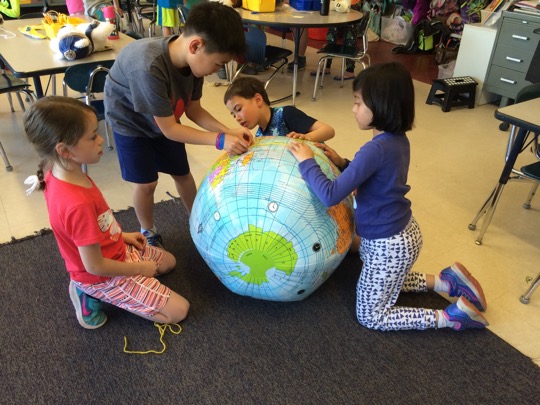

Have students type their social studies assignment or spelling words for the week.USE these techniques while in front of any computer.Set aside a regular time for keyboarding (ideally 15 to 30 minutes/day for five to six weeks), THEN:.General ways to integrate typing into your classroom routines At this level there is no need for speed. Students should generally learn to type as fast as they need to for classwork.Always remind students of posture and proer hand position.Most students love zipping up their work with extra color and formatting. Have them use a variety of fonts, colors, and formatting. Have students type short letters, reports, lists of spelling words, lists of vocabulary words. Using computer drawing programs increases fine motor control. Don t just practice typing in isolation.Posture, hand position, use of all fingers should be emphasized instead. Keep your other fingers on the home row keys, too. Caps lock and shift/lock-the difference and when to use them.Learning about Tab, top row with numbers, home row, numeric keypad.Students should know the following skills: It is a good time to begin a touch typing program which emphasizes posture and keyboard awareness. The goal this year is to reinforce the previously learned skills and begin a shift to all fingers typing. Review of the skills taught in Kindergarten and First Grade should be done early in the year. The focus in second grade is on key placement, posture, and two-handed position. Using a computer, practice drag-and-drop skills by using TuxPaint, Paint, or games (in the Activities page.Talk about the function of each and then have students practice when they visit websites. Use the internet to go to some interesting websites, but first notice the web address (url), scroll bar, and links.When typing use good posture and hand positionĪ progression of activities for students in first grade:.No need for speed at this level-just good habits.Learning to play the piano-correct posture and height is important. Straight and feet should be on the floor.


Students, but stress sitting directly in front of the monitor with the Posture-this may be hard in a computer lab designed for much bigger Talk about monitor, keyboard, CPU, ports, Students should know the following (many skills have already been introduced in kindergarten):Īnd output devices.

Should strike the keys-"little puppy paws instead of big catĬlaws.Have images keyboards available for each student and placed around Students' hands shouldn't droop, but be positioned above Mouse skills: single-click, double click, click-drag-drop, scrolling.Think about students this age learning to play the piano-correct posture and height is important. Ideally, they should be sitting up straight and feet should be on the floor. Correct posture-this may be hard in a computer lab designed for much bigger students, but stress sitting directly in front of the monitor with the keyboard squarely in front of it.Parts of the mouse (if you're using a computer) and which fingers to use-don't worry about Right-click at this age.has a good lesson on this, introducing parts of a computer. Talk about monitor, keyboard, CPU, ports, headphones, and microphone. Have a discussion about the various kinds of devices and their use. doi:10.1111/j. focus in kindergarten should be on learning about the technology, mouse mastery, and learning about the keyboard. The influence of classroom aggression and classroom climate on aggressive-disruptive behavior. Language, literacy, attentional behaviors, and instructional quality predictors of written composition for first graders. Kim YS, Otaiba SA, Sidler JF, Gruelich L. Reading Self-Concept and Reading Anxiety in Second Grade Children: The Roles of Word Reading, Emergent Literacy Skills, Working Memory and Gender. Cognitive and Linguistic Predictors of Mathematical Word Problems With and Without Irrelevant Information. doi:10.1111/j.Ĭommon Core State Standards Initiative. Seven-year-olds Allocate Attention Like Adults Unless Working Memory is Overloaded. The Guide to 2nd Grade.Ĭowan N, Morey CC, AuBuchon AM, Zwilling CE, Gilchrist AL. First graders' literacy and self-regulation gains: The effect of individualizing student instruction. Connor CM, Ponitz CC, Phillips BM, Travis QM, Glasney S, Morrison FJ.


 0 kommentar(er)
0 kommentar(er)
